Posts Tagged: drones
No Labor Day Holiday for Honey Bees
On Labor Day, a federal holiday, we celebrate the our country's labor movement, our gratitude, and our achievements. But there is no Labor Day holiday for the worker bee, one of three castes (queen, worker and drone) in a honey bee colony. No...
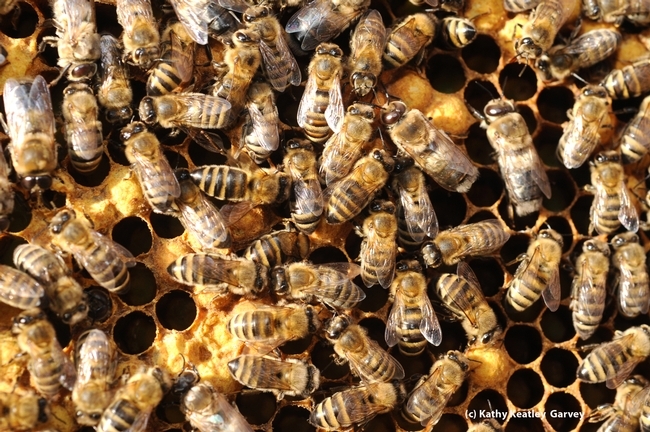
Worker bees are aptly named. They comprise most of the bees in the colony and do most of the work. (Photo by Kathy Keatley Garvey)
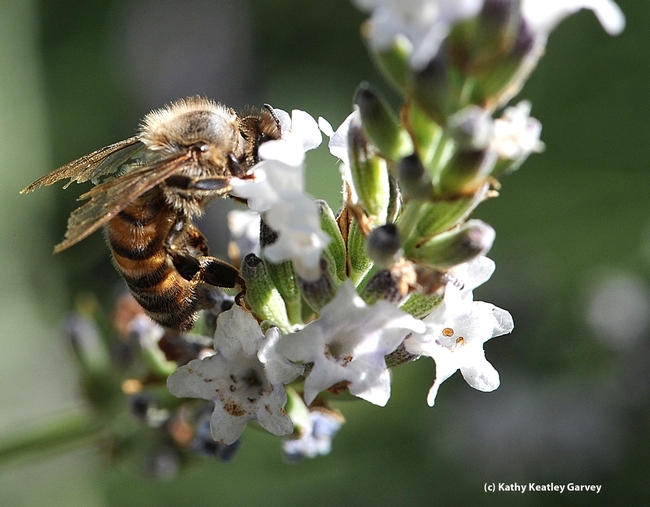
This aging worker bee is all tattered and torn. (Photo by Kathy Keatley Garvey)
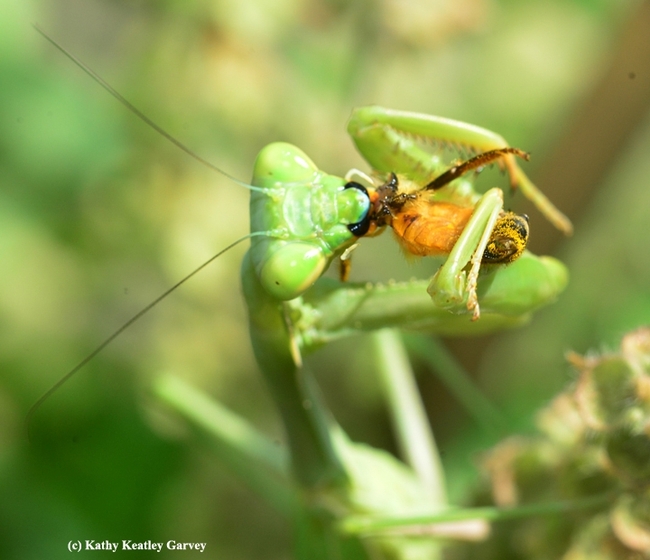
Foraging can be dangerous. Here a praying mantis has just nabbed a worker bee. (Photo by Kathy Keatley Garvey)
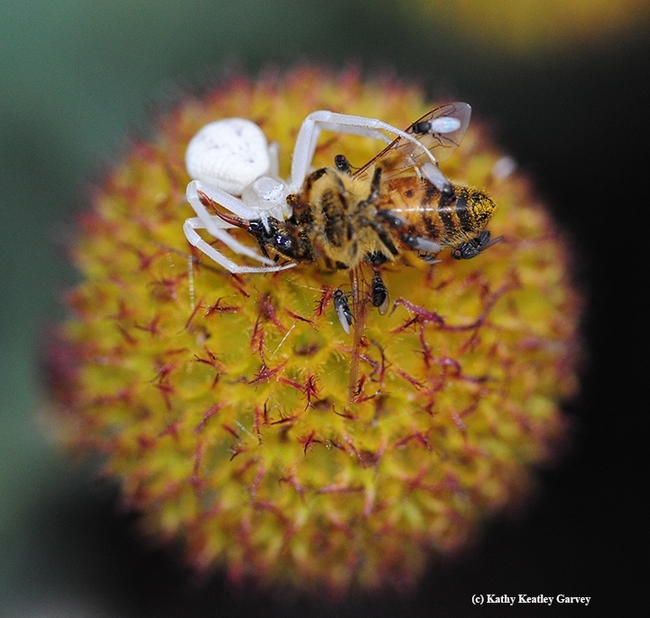
A crab spider feeding on a honey bee. Crab spiders are ambush predators. (Photo by Kathy Keatley Garvey)
Learn About Honey Bees at the California Honey Festival
If you haven't been around honey bees much, and can't distinguish the queen from a worker bee (sterile female) or drone (male bee), head over the California Master Beekeeper Program displays at the California Honey Festival on Saturday...
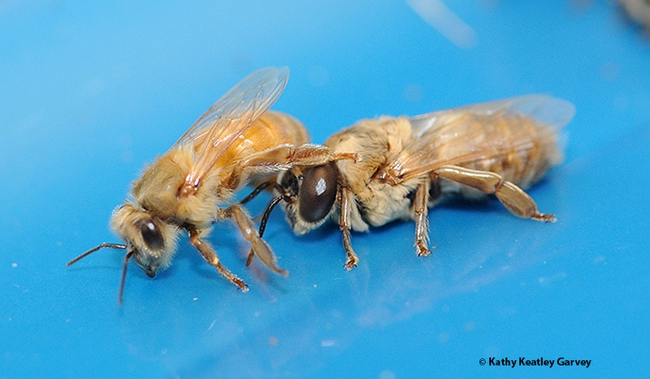
The worker bee (sterile female) is at left, and the drone (male) is at right. (Photo by Kathy Keatley Garvey)
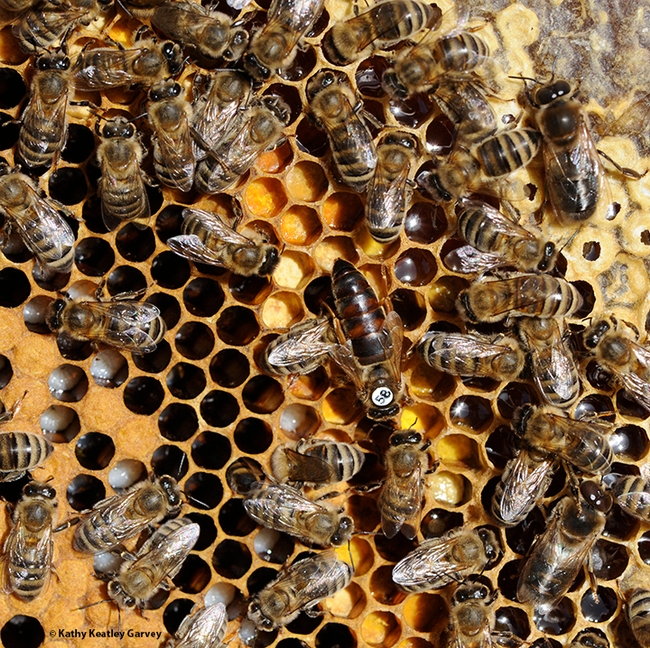
Can you find the queen, the workers and the drones? (Photo by Kathy Keatley Garvey)
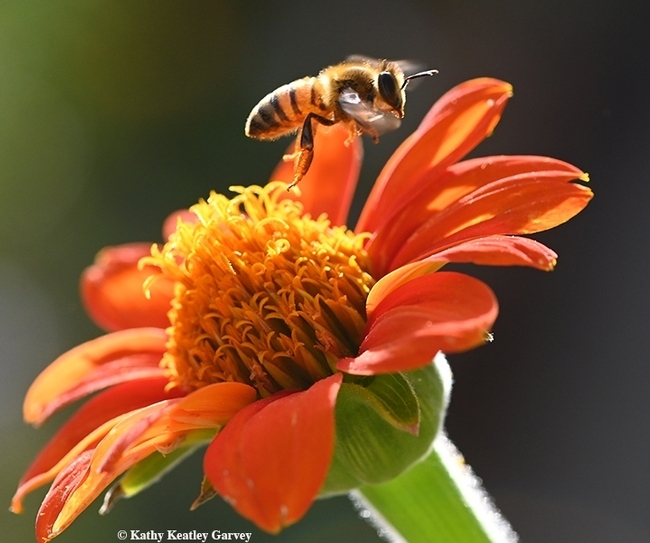
Worker bees are sterile females. Here a worker bee (forager) leaves a Mexican sunflower, Tithonia rotundifola. (Photo by Kathy Keatley Garvey)
Outstanding Research Paper on Agricultural Drones Wins Editors' Choice Award
Winning an Editors' Choice Award was a milestone for an international research team, including UC Davis entomologist Elvira de Lange. De Lange assembled a project team that wrote a research paper on the agricultural use of drones,...
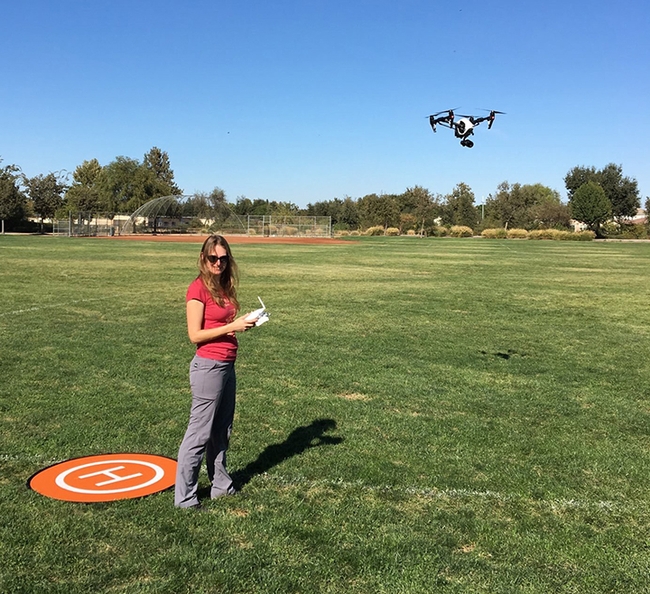
Entomologist Elvira Lange utilizing a drone. Agricultural drones, she said, are "highly versatile and have great commercial potential."
Why Drones Are Important in Sustainable Agriculture in the 21st Century
Drones... If you're thinking of apiculture, you might be thinking of drones (male bees). But if you're thinking of agriculture--more specifically sustainable agriculture practices in the 21st century--you ought to be thinking of the importance of...
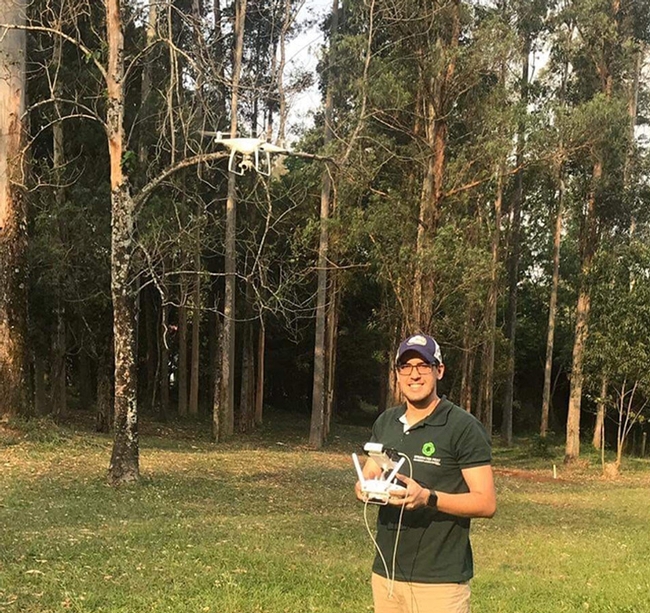
Lead author and entomologist Fernando Iost Filho of the Department of Entomology and Acarology, University of Sao Paulo, Brazil. He is a former UC Davis exchange student.
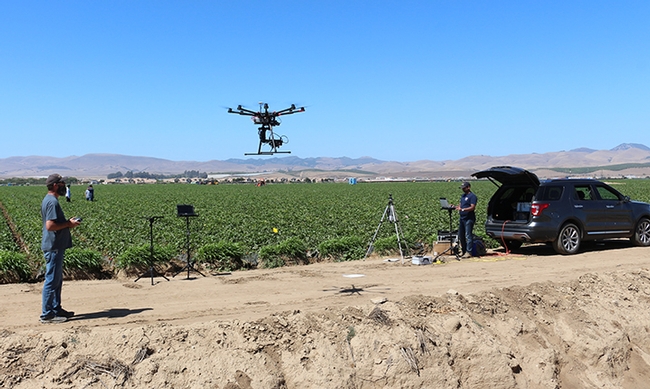
A drone over a Santa Monica strawberry field. Drones can target pest outbreaks or hot spots in field crops and orchards, the scientists pointed out. (Photo by Elvira de Lange)
Do You Know Me?
The drone fly is an identity thief. It's often mistaken for a honey bee. Hey, isn't every floral visitor a bee? No, not by a long shot. One's a fly and one's a bee. That came to mind last weekend when we saw a large number of honey bees (Apis...
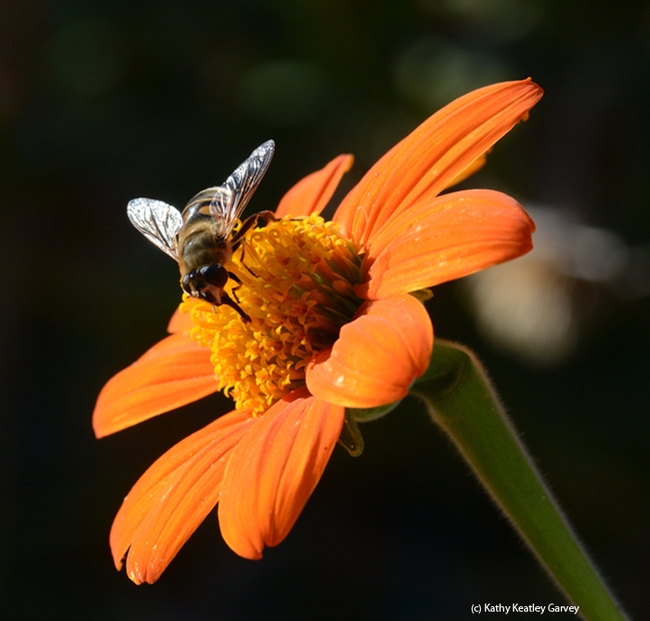
A drone fly, Eristalis tenax, sips nectar from a Mexican sunflower, Tithonia. (Photo by Kathy Keatley Garvey)
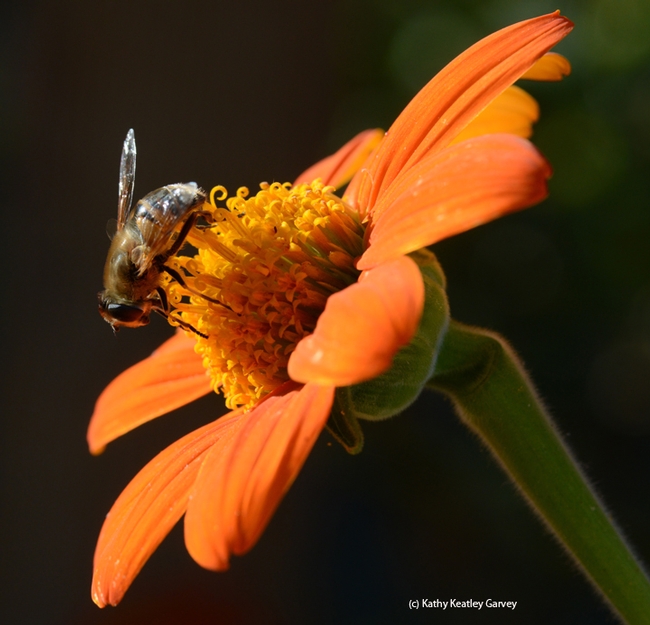
Side view of a drone fly. The fly is often mistaken for a honey bee. (Photo by Kathy Keatley Garvey)
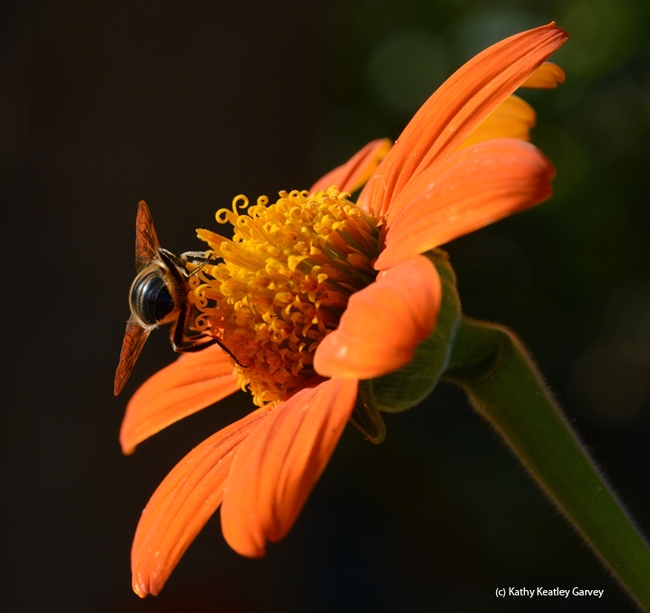
Over and out--this drone fly says it's time to go. (Photo by Kathy Keatley Garvey)
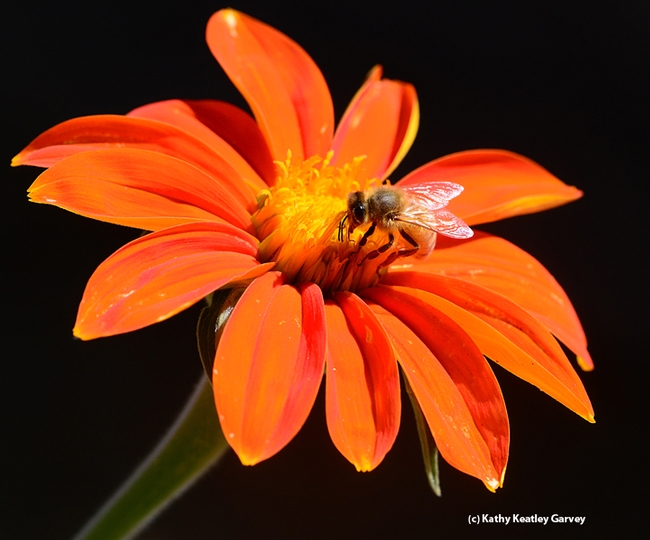
A honey bee sipping nectar from a Tithonia. (Photo by Kathy Keatley Garvey)

